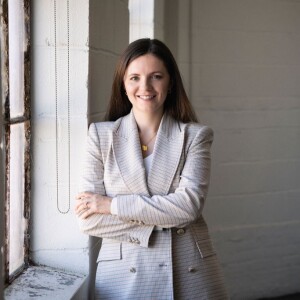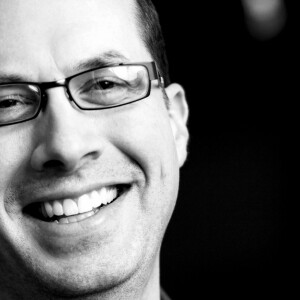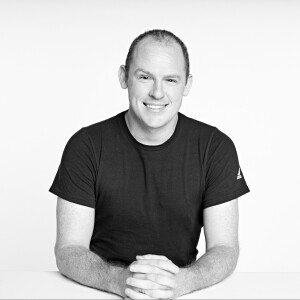Episodes

Tuesday Jun 04, 2024
Tuesday Jun 04, 2024
My guest for this episode is Emma Landis.
She is the founder and principal of Richan Art, an art advisory focused on collections management for corporate and private collectors, as well as public art commissioning for some of Canada’s largest developers.
Emma holds an MA and a PhD in art history from Western University and University of Victoria Respectively.
In this episode, we are discussing her mission to build a greater appreciation for and understanding of the arts among various stakeholders, such as collectors, for whom she seeks unique and meaningful pieces; developers and institutional clients; as well as students through the development of a mentorship program at OCAD University and the Etobicoke School of the Arts.
About the podcast: Single Serves is a podcast where we interview experts on single issues of interest to architects and designers. The thought-provoking ideas shared here are intended to inspire our listeners to become well-rounded entrepreneurs who are the leaders of their field.
Credits: ©2024 Produced by Révélateur Studio & edited by Chris Rodd

Tuesday May 14, 2024
Single Serves ep. 409 - Bogdan on The Crisis of the Architectural Profession
Tuesday May 14, 2024
Tuesday May 14, 2024
Oana Bogdan is the founder of Brussels-based practice &bogdan (founded 2007). In 2016, she was Secretary of State for cultural heritage in the Romanian Government (her country of origin) and has also been involved in many industry organisations and businesses in addition to her own practice, too numerous to list them all here.
In her practice she promotes cooperation and operates from the “follow me I’m right behind you” type of leadership and is on a mission to tackle the challenges of the architectural profession in the 21st century, especially in the belgian context, but many of these lessons apply to architecture in other locales, which often suffer from the same problems.
In this episode, we are discussing what Oana calls "the cris of the architectural profession", as we connected over a shared desire to see some of the challenges that architects face in many jurisdictions tackled and solved once and for all.
About the podcast: Single Serves is a podcast where we interview experts on single issues of interest to architects and designers. The thought-provoking ideas shared here are intended to inspire our listeners to become well-rounded entrepreneurs who are the leaders of their field.
Credits: ©2023 Produced by Révélateur Studio & edited by Chris Rodd

Monday Mar 25, 2024
Single Serves ep. 408 - Cohen-Murison On The Intersection of Tech and Design
Monday Mar 25, 2024
Monday Mar 25, 2024
Rachel Cohen-Murison stands at the forefront as an architect and entrepreneur, embodying the fresh wave of innovative designers who are shattering the norms of the conventional practice. They're adopting a more entrepreneurial approach to architecture, strategically creating value by eliminating market pain points.
Rachel and her contemporaries undeniably signify the brilliant future of architecture. As digital natives, they're unchained from the typical constraints of traditional practice.
As Jake Rudin astutely pointed out in a previous episode, this groundbreaking approach solidifies that architects hold a unique position to tackle the pressing issues of tomorrow. They're equipped to devise innovative solutions beyond the reach of other professions.
Discover how Rachel is trailblazing this path.
About the podcast: Single Serves is a podcast where we interview experts on single issues of interest to architects and designers. The thought-provoking ideas shared here are intended to inspire our listeners to become well-rounded entrepreneurs who are the leaders of their field.
Credits: ©2023 Produced by Révélateur Studio & edited by Chris Rodd
Interview transcript (unedited):

Tuesday Jan 09, 2024
Single Serves ep. 407 - Brill on Housing Innovation
Tuesday Jan 09, 2024
Tuesday Jan 09, 2024
Kyle Brill is an interdisciplinary designer and systems thinker born and raised in Toronto. He studied architecture at the University of Waterloo, graduating with his masters in 2016 with honours. Kyle began his career working at architecture and product design firms in Toronto, London, and New York City and became passionate about housing issues and urban development. He has a keen interest in understanding the social, economic and political dimensions of how we build, and thinks architects and designers should take a much more active role in developing our cities, which is what we're going to talk about today. Outside of his professional life Kyle is an avid home cook, photographer, and writer, with a mild obsession with history and science fiction.
About the podcast: Single Serves is a podcast where we interview experts on single issues of interest to architects and designers. The thought-provoking ideas shared here are intended to inspire our listeners to become well-rounded entrepreneurs who are the leaders of their field.
Credits: ©2023 Produced by Révélateur Studio & edited by Chris Rodd

Tuesday Oct 31, 2023
Single Serves ep. 406 - Wainwright on Sales as Conversations
Tuesday Oct 31, 2023
Tuesday Oct 31, 2023
Mark Wainwright is the founder and Principal Consultant at Wainwright Insight, a sales consultancy for professional services firms. After over 20 years working with various professional services firms, Mark created Wainwright Insight to address the lack of sales expertise in said firms, and to help experts sell better. Mark bills himself as a "Part-time Sales Manager for Part-time Salespeople" like architects, engineers, and financial advisors who need to get organized, build future sales leaders, and grow their firms.
Other related episodes mentioned in this interview: 401 w/ Tyler Suomala and 405 w/ Kim Seldon.
About the podcast: Single Serves is a podcast where we interview experts on single issues of interest to architects and designers. The thought-provoking ideas shared here are intended to inspire our listeners to become well-rounded entrepreneurs who are the leaders of their field.
Credits: ©2023 Produced by Révélateur Studio & edited by Chris Rodd

Tuesday Sep 26, 2023
Single Serves ep. 405 - Seldon on Running a Profitable Business
Tuesday Sep 26, 2023
Tuesday Sep 26, 2023
Kimberley Seldon is the founder of Kimberley Seldon Design Group, an interior design firm with offices in Toronto and Los Angeles.
In addition to her design practice, she runs Business of Design, an online learning platform she started to help other professionals in the design field to become financially successful, with the stated goals that designers running their own practices should aim at making 6-figures salaries.
I wanted to have Kimberley on the podcast to discuss how she and others have accomplished that, as financial viability should be the foundation of any design business.
About the podcast: Single Serves is a podcast where we interview experts on single issues of interest to architects and designers. The thought-provoking ideas shared here are intended to inspire our listeners to become well-rounded entrepreneurs who are the leaders of their field.
Credits: ©2022 Produced by Révélateur Studio & edited by Chris Rodd

Tuesday Aug 29, 2023
Single Serves ep. 404 - Derringer on Web3, Crypto and the Metaverse
Tuesday Aug 29, 2023
Tuesday Aug 29, 2023
Jaime Derringer is a serial entrepreneur, artist and Founder of the popular design platform Design Milk and Clever podcast. She is also an artist living in San Diego, CA.
Jaime and I recorded another podcast a few years back that appeared on Truth is Golden in 2018 (ep.106 - "The Milk That Never Spoils"). We talked then about her and life up to that point. Go check it out if you'd like to learn more about Jaime.
Today we're reconvening to talk about all things metaverse, web3 and crypto, as Jaime had now taken the next step in her professional life after selling Design Milk to Ahalife in 2019.
About the podcast: Single Serves is a podcast where we interview experts on single issues of interest to architects and designers. The thought-provoking ideas shared here are intended to inspire our listeners to become well-rounded entrepreneurs who are the leaders of their field.
Credits: ©2022 Produced by Révélateur Studio & edited by Chris Rodd

Tuesday Jul 25, 2023
Single Serves ep. 403 - Rudin on The Careers Outside of Architecture
Tuesday Jul 25, 2023
Tuesday Jul 25, 2023
Jake Rudin is a co-founder of the design career consulting company Out of Architecture, a career consulting firm helping architects exploring the value of their skills both in and out of the architectural profession. He also works as a member of the Adidas Advanced Creation Technologies team - fabricating, designing, digitizing, model making, and exploring all aspects of footwear.
I invited Jake to have a conversation so he can share his insights on challenges facing practicing and non-practicing architects alike and what once can do about it.
About the podcast: Single Serves is a podcast where we interview experts on single issues of interest to architects and designers. The thought-provoking ideas shared here are intended to inspire our listeners to become well-rounded entrepreneurs who are the leaders of their field.
Credits: ©2022 Produced by Révélateur Studio & edited by Chris Rodd



